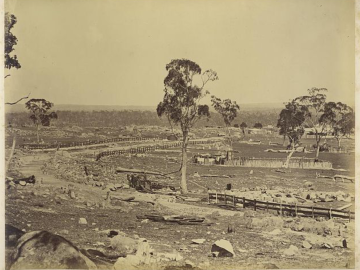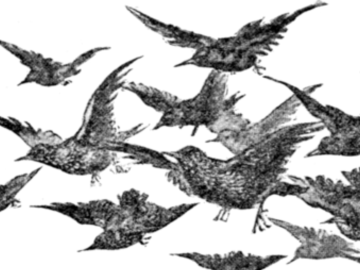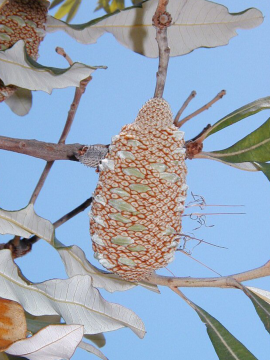An Imaginary Taxonomy of the South Seas
Miles Hitchcock
Excerpt from the Annals of Natural History, xiv, 1822, “Description of a Flightless Swan of the Southern Indian Ocean” by Robert Frazer, Botanist, Royal Navy
The anatomical descriptions show it in the Anatinae family and closest in skeletal structure of the genus Cygnus, with vestigial limbs three inches in length behind the furcula. Other remarkable features are the extended metatarsus with semi-palmate feet, used for wading and running, and the hard turtle-like beak, with which it cracks open both shell-fish and the seeds of the Boab tree… With its extended neck vertebrae it is best described as a Flightless Swan, though one requiring a new Sub-Genera for Linnean classification: I propose Indiana Cygnus as a descriptive binomial.
Appendix B: excerpts from the Diaries of Robert Frazer 1812-1816, private collection,
On the shores of the Isle’s southern Estuary we made our first Discovery:
flocks of Flamingo-like birds like running through the shallows on tall legs
On Collection it resembled a Swan but with stunted wings! It’s Neck
is equally graceful to the English variety but ends in an Ugly head
and Turtle-beak, Fat and Hooked, which can Reportedly snap a Finger.
The wading flocks of these Oddities closely resembled Flamingoes
but unlike other Flightless Birds of the Antipodes
they were feeding both in water and on land. The meat proved
good at table, similar in Quality to the American turkey.
The Estuary waters contained Marine Life of such Multitude
that a productive Fishery would be quick to Establish;
its stock of fishes, crabs, Sharks, Dolphins and eels
made it sometime Hard to put oars into the Water.
A mile Upriver the Stream ran Fresh then Wound for many miles
through a rolling Plain verdantly covered in Useful palms and trees:
Boabs and Proteas dominated the high ground
while a jungle of semi-tropical Woods occupied the lowlands
one a Mahogany of peculiar dimensions and Strength.
It would appear that this is a Dominion of Birds;
by day colourful Parrots and Cockatoos occupy the trees
some so active we first mistook them for Monkeys
by Night the forest floor is alive with flightless species
– a moth-eating Dove was collected, no larger than a man’s hand -
yet we have not seen a single Mammal!
However where we bivouaced that Night, by the River,
I awoke to hear the Roar of a Large animal in the Rushes
and when I Ran out, nothing could be seen.
On Returning to the Northern Shores of the Estuary
we made our next Remarkable Discovery:
three Tiny Men - not four foot tall
Naked and unadorned, pursuing Swans.
They appeared not unlike the Pygmies of New Guinea,
with similar Temperament: they Threatened
us with Spears, there was a Brief exchange of Shouts,
then the womenfolk ran Quickly with their Babes
into the forest, followed Soon by the Men.
They were Diminutive Negroids: Pygmies
unclothed and Possessing the most basic Tools.
For the rest of the Exploration none other of these Folk
were encountered, tho not far downstream we found rudimentary branch Shelters
and abandoned cooking Fires, all as tiny as a Doll’s house.
Feature image via 'Art Collection - The Metropolitan Museum of Art'


